
Here we come upon another of Jesus’ miracles performed on a Sabbath. This may be a week after he proved himself the Lord of the Sabbath, or it could be several weeks later, Luke doesn’t specify. What is notable is that this is one of seven miracles Jesus performs on the Sabbath. Seven, the number of days in the week and, interestingly, the day of the Sabbath (the day God rested). The number denotes perfection and completeness in Scripture. While you may never hear this passage preached in church, it was important to Luke and in the revelation of Jesus as Messiah.
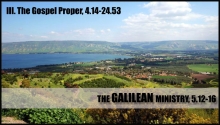
With four disciples in tow, Jesus set out to visit various towns and villages sprinkled around Galilee. He began his mission by revealing his identity to the people of Nazareth and from that moment forward he has traveled around the region to teach and heal others. It seems every time he finds a few moments alone the crowds find him, and still he receives every person with grace and treats them with dignity and love. Today we find Jesus in a town so small and unimportant Luke doesn’t even bother to name it. The leper Jesus meets there, however, is about to become a part of Biblical history.
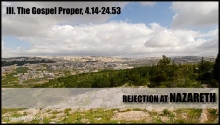
After completing his introduction to, and proof of, the Messiah being the rightful king of all humanity Luke turns to the gospel proper. This section begins with a “progress report” of sorts (Luke 4.14-15). We see throughout the book of Acts a series of progress reports on the growth of the early church. These reports are marked divisions of the text that can be used to break down the content and outline the book. Luke also includes progress reports in his gospel, but rather than being about the church they are about how people respond to Jesus.
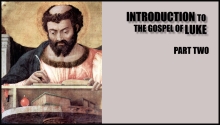
Last time we left off with the angel Gabriel talking with Zechariah in the inner sanctum of the temple. Zechariah’s should have thought before he spoke, a situation I’m sure we’re all familiar with. He questioned the truth of Gabriel’s prophecy regarding he and his elderly, barren wife having a son. The result was the angel made Zechariah dumb until John’s birth. And this is where our story becomes rather humorous. When Zechariah left the temple area, much to the relief of all, he could not tell them what had transpired. This event inspired the world’s first game of charades.

When teaching in a synagogue on the Sabbath it was customary for the teacher to sit. This seems odd to modern Jesus-followers as we are used to a preacher standing -- usually behind a pulpit -- but in the first century teaching was more relaxed. Therefore, after teaching in the synagogue we often see Jesus going for a walk and mingling with the people who needed him most. The Sabbath mentioned in the first verse of chapter six is one such day. Jesus and the disciples are walking through a grain field and began snacking on some of the stalks.
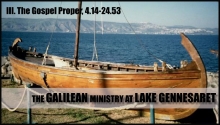
When reading the New Testament gospels, it is easy to get caught up in watching Jesus. He is the main character, after all, and the one doing all the miracles. If you are a mature follower of Christ, I think it can be instructive to look at everyone else at least every once in a while. For example, we find in these first eleven verses of chapter five that life in the first century AD is not all that unlike life in the 21st. Simon Peter and his brother Andrew are in business with brothers James and John in the fishing industry.
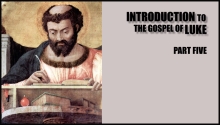
Luke continues his hop-scotch through time, now leading us to an adult John the Baptist in the midst of his ministry. At first glance it appears that Luke is overdoing it with the number of rulers he validates in the first three verses of chapter three. Why should he bother with it? For a couple of reasons. First, to establish the time the events took place (this is a historic record, after all). Second, the benefactor of the book, Theophilous, would be familiar with these rulers if not personally then by reputation. This firmly establishes the time and historicity of John’s ministry.

The births of John the Baptist and Jesus occurred under the rule of Herod the Great. It is commonly accepted that his reign extended from 37 BC until his death in 4 BC. The date of his death is fixed to a solar eclipse that occurred that year (ancient historian Josephus tells us Herod died the same year as the eclipse). Recently some scholars have decided the true date should be affixed to a partial eclipse occurring in 1 BC, meaning the birth of Jesus would be closer to the date suggested by map makers of old. There is no way of determining this exactly unless or until other documentation is unearthed. Either way, the birth of John and Jesus occurred near the end of the pre-Common Era.
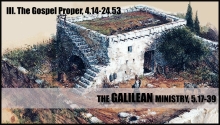
Luke takes us to another nameless town that was small in every way but one: the size of the audience Jesus drew. Jesus’ reputation had grown significantly and word about of his ministry had spread throughout Israel. Some Pharisees and teachers of the Law were sent to look into the new rabbi. They had seen many so-called messiah’s come and go, and a few even made trouble for Israel with Rome. So they came, some even from the temple in Jerusalem, to investigate and report back to their superiors, who were less interested in silencing another false prophet than in keeping their political power.
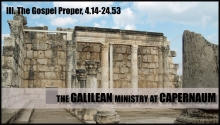
Jesus left Nazareth and continued his journey to Capernaum. Only one week after his near death experience in his home town, we find Jesus teaching once more in a local synagogue. Once more the people were amazed with the sermon, but on this occasion they were more impressed with his style than with the content. We don’t know what passage Jesus taught from, it may have been the same as in Nazareth or it may have been something entirely different. Luke didn’t see fit to provide the details.
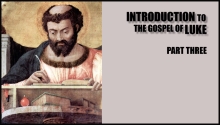
For some reason Luke skips over the wise men, the ruler’s decision to have all boys three years of age and under slaughtered, and the escape to Egypt. Due to the fact that this is an introduction only to the ministry life of Jesus, I imagine he felt he needed to leave it out. An introduction to a book can only be so long. So instead Luke moves us ahead 12 years to the event of his withdrawal from his parents after the feast of Passover to spend time in the temple. The timing, and number of days missing, are significant.
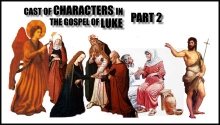
Today we complete our look at the main players in the introduction of Luke’s gospel.

